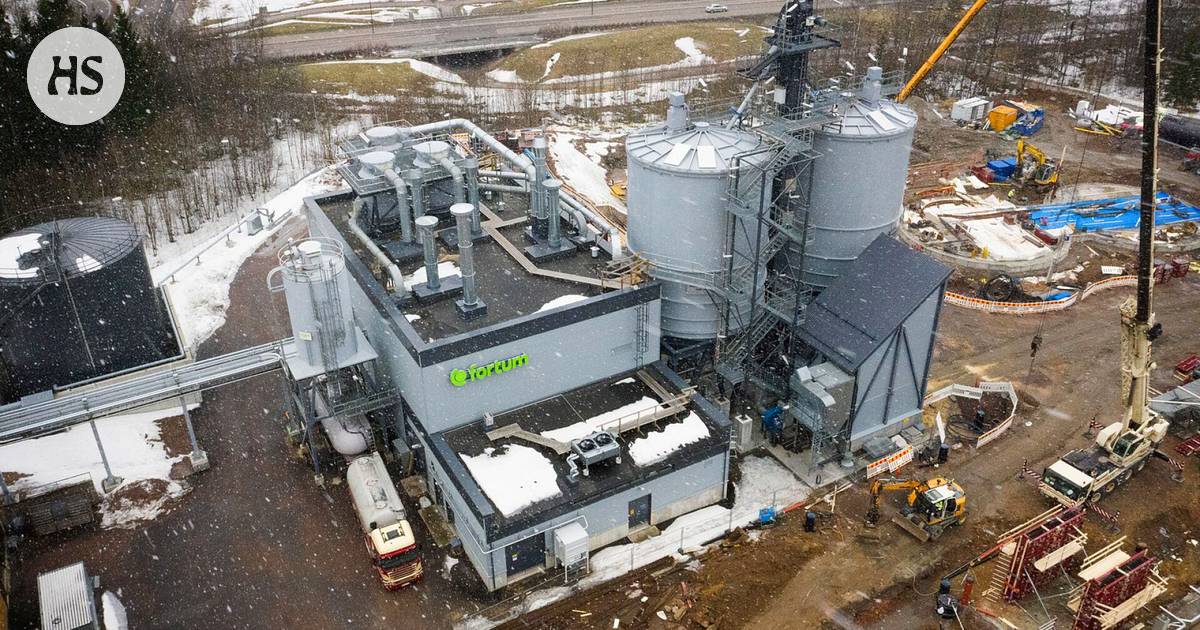Fortum plans to stop burning coal in Espoo in 2025.
Fortumin and Microsoft ‘s large data center project will make Espoo district heating production carbon neutral by the end of this decade.
The companies announced the implementation of the data centers today, Thursday.
Read more: Microsoft to build controversial data center area in Oitta, Espoo, which will become Finland’s largest IT investment
Fortum will be able to stop burning coal in its production in Espoo by 2025.
Vice President, Heating and Cooling, Fortum Timo Piispa calculates that phased – in data centers will increase the share of waste heat and other non – combustion heat sources in district heating production to 65%.
In addition to Oittaa in Espoo, the data center will also be arranged in Kolabacken, Kirkkonummi, near Ring Road III.
Now The published waste heat recycling project replaces coal and reduces the use of gas in the production of district heating in Espoo, Kirkkonummi and Kauniainen. This will reduce CO2 emissions from district heating by around 400,000 tonnes per year.
The change is significant.
The emission-free waste heat generated by the data centers will cover about 40 percent of the heat demand of about 250,000 district heating users in Espoo, Kauniainen and Kirkkonummi.
65% of the non-combustion heat production involves waste heat recovered from HSY’s treated wastewater, which today accounts for 25% of all heat production.
Fortum also reported on the construction of industrial-scale air-to-water heat pumps in Vermo late last year. Construction work on the project is already underway.
“These projects mean that the burning of biofuels such as pellets in district heating will remain a complementary production method. Pellets are only burned on very cold winter days, ”says the bishop.
District heating According to the Bishop, Fortum’s new openings bring stability.
“So far, our consumer prices have been very competitive. Utilizing waste heat will further improve the situation. Besides, the heat source is close to the district heating network, ”says the Bishop.
The waste heat in the data centers is about 30 degrees, so it does not need to be heated as much as, for example, seawater in the production of district heating.
“When this happens, we will no longer be dependent on fossil fuel price fluctuations,” the Bishop anticipates.
In the neighboring city of Helsinki, the energy company Helen plans to transfer waste heat 40 kilometers from Kilpilahti in Porvoo or 2-degree seawater from the depths of the Gulf of Finland 20 kilometers from the coast.
When then data center machines are spinning in production?
Both Espoo and Kirkkonummi town plans have been appealed.
In Espoo, a local environmental association has filed a complaint with the Helsinki Administrative Court. The Espoo City Council approved the change to the plan in November last year, so the appeal process is just beginning.
The project is opposed by some of the area’s residents, who fear the massive industrial area will pollute nature areas and landscapes. The project corresponds to three shopping centers Jumbo.
The project is also opposed by conservationists, as the area designated for the halls near Ring Road III is currently a relatively unspoilt nature area.
According to Fortum’s Bishop, the company is prepared to await the resolution of complaints.
“We will not start until all the necessary permits are in place.”
#Environment #Microsoft #Jumbosized #data #centers #natural #landscape #Espoo #significant #impact #residents #heat #bills

/https://content.production.cdn.art19.com/images/6e/20/75/47/6e207547-4ad6-4811-b8f0-3c7b7a3edb51/0b845a2013df296da2e006375909e160f8cc4c964755dc820563b9006df775)





/s3/static.nrc.nl/images/gn4/stripped/data83441361-9d1231.jpg)
